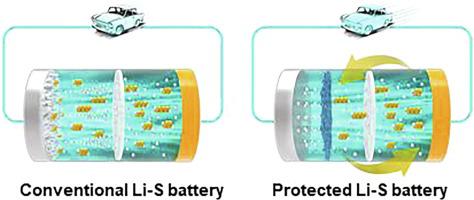Journal of Energy Chemistry ( IF 14.0 ) Pub Date : 2020-05-05 , DOI: 10.1016/j.jechem.2020.04.046 Naseem Akhtar , Xiaogang Sun , Muhammad Yasir Akram , Fakhar Zaman , Weikun Wang , Anbang Wang , Long Chen , Hao Zhang , Yuepeng Guan , Yaqin Huang

|
Lithium-sulfur (Li-S) battery is one of the best candidates for the next-generation energy storage system due to its high theoretical capacity (1675 mA h−1), low cost and environment friendliness. However, lithium (Li) dendrites formation and polysulfide shuttle effect are two major challenges that limit the commercialization of Li-S batteries. Here we design a facile bifunctional interlayer of gelatin-based fibers (GFs), aiming to protect the Li anode surface from the dendrites growth and also hinder the polysulfide shuttle effect. We reveal that the 3D structural network of GFs layer with abundant polar sites helps to homogenize Li-ion flux, leading to uniform Li-ion deposition. Meanwhile, the polar moieties also immobilize the lithium polysulfides and protect the Li metal from the side-reaction. As a result, the anode-protected batteries have shown significantly enhanced performance. A high coulombic efficiency of 96% after 160 cycles has been achieved in the Li-Cu half cells. The Li-Li symmetric cells exhibit a prolonged lifespan for 800 h with voltage hysteresis (10 mV). With the as-prepared GFs layer, the Li-S battery shows approximately 14% higher capacity retention than the pristine battery at 0.5 C after 100 cycles. Our work presents that this gelatin-based bi-functional interlayer provides a viable strategy for the manufacturing of advanced Li-S batteries.
中文翻译:

基于明胶的人工SEI,用于锂硫电池中的锂沉积调节和多硫化物穿梭抑制
锂硫(Li-S)电池具有较高的理论容量(1675 mA h -1,因此是下一代储能系统的最佳选择之一)),低成本和环境友好。然而,锂(Li)树突的形成和多硫化物的穿梭效应是限制Li-S电池商业化的两个主要挑战。在这里,我们设计了一种方便的明胶基纤维(GFs)的双功能中间层,旨在保护Li阳极表面免受树枝状晶体生长的影响,并阻止多硫化物的穿梭作用。我们揭示了具有丰富极性位点的GFs层的3D结构网络有助于使锂离子通量均匀化,从而导致均匀的锂离子沉积。同时,极性部分还固定了多硫化锂并保护锂金属免受副反应。结果,阳极保护的电池表现出显着增强的性能。在锂铜半电池中,经过160个循环,库仑效率高达96%。Li-Li对称电池的电压滞后(10 mV)可以延长寿命800 h。对于准备好的GFs层,在100次循环后,Li-S电池在0.5 C时的原始容量比原始电池高约14%。我们的工作表明,这种基于明胶的双功能中间层为制造高级Li-S电池提供了可行的策略。


















































 京公网安备 11010802027423号
京公网安备 11010802027423号